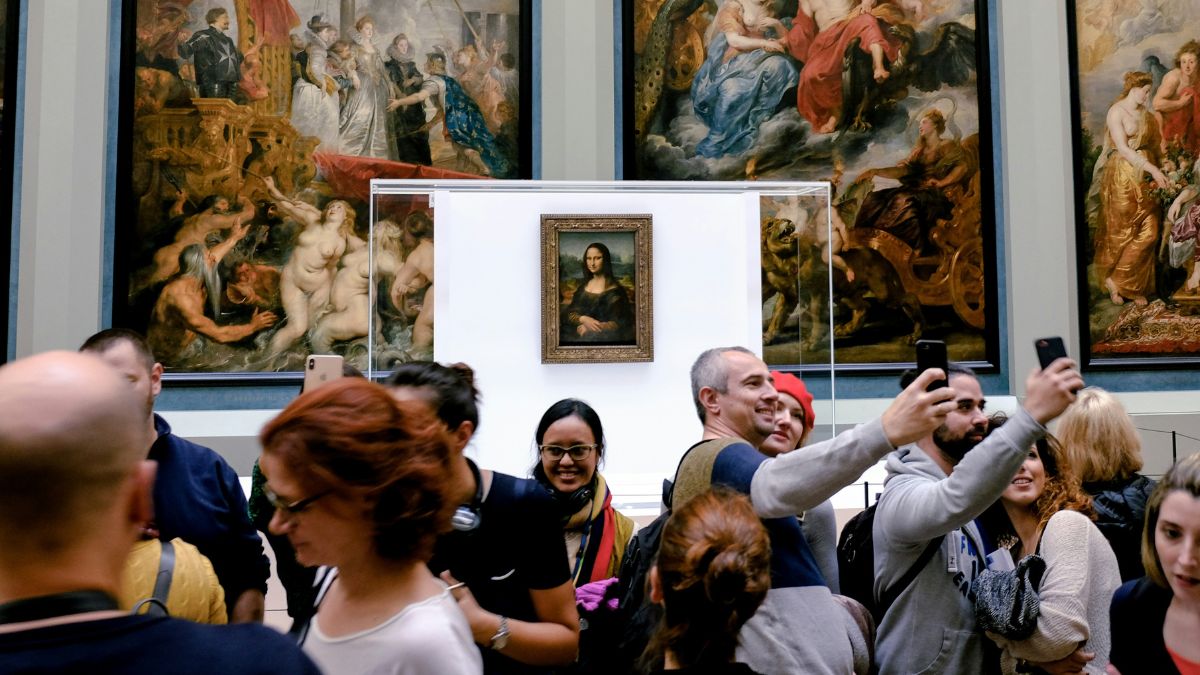Culture
Humanism
How a Cleaner Stole the Mona Lisa: The Most Famous Art Thefts in History
20 November 2025

What are we really celebrating when we blow out the candles on a cake? This custom, which seems obvious today, emerged from a blend of religious rituals, social ambition, and the Industrial Revolution. And this entire history of the birthday cake actually begins not with birthdays, but with offerings to the Moon Goddess.
In ancient cultures, cakes had nothing in common with the fluffy layer cakes we know today. Early sweet baked goods resembled a quite hard bread, enriched with honey and cheese, and sometimes nuts, seeds, or dried fruit.
Interestingly, these sweets held a sacred character. The Greeks offered sweet honey flatbreads to the gods. One of the most popular baked goods of this type was a cheesecake with candles, offered to Artemis, the goddess of the hunt and the moon. The round shape and the light of the candles were supposed to make the cake resemble the celestial body. Early types of cakes were therefore associated with celebrations, but not birthdays—they marked festivals related to deities. So, where did the connection come from?
The earliest evidence of birthday celebrations comes from ancient Sumer, yet you won’t observe similar customs in ancient Greece. The Romans developed this tradition, but only men celebrated birthdays there. Evidence of what we might call a birthday cake today originates from that era.
A man received a special type of baked good made from wheat flour and yeast, enriched with honey and nuts, for his 50th birthday. It is worth noting that this applied only to deserving citizens from the higher social strata. The cake symbolised status and recognised the achievements of the celebrated person’s life.
Similar sweet cakes, however, people associated more with sacrifices to the gods, state holidays, or weddings. Therefore, the practice of giving one only to deserving, high-ranking men just once in their lifetime. The 50th birthday of such a personality was more a celebration by the entire community in honour of a specific individual than a private celebration for the celebrant.
The breakthrough came in 18th-century Germany. That is when the tradition of Kinderfeste, or children’s birthday parties, emerged. These events already featured many familiar elements, most importantly a cake with lit candles. Each candle symbolised one year of life, but they always added one extra candle to the cake, which represented luck in the new year just beginning.
The custom of blowing out candles was born during Kinderfeste. They presented the cake with the lit lights to the child in the morning, and the candles were replaced throughout the day so they would not go out.
The formal blowing out took place during the evening party. They encouraged the birthday boy or girl to make a wish then. The wish was supposed to rise to the heavens along with the smoke. This marked the beginning of the tradition we know today. However, not everyone could afford such a party.
Even two centuries ago, cakes were a luxury. Sugar, butter, white flour—all these ingredients cost a fortune. Cookbooks of the time advised serving children apple bread pudding for their birthdays. A true birthday cake was entirely out of reach for most people.
Only the Industrial Revolution made these baked goods accessible to the masses. Mass production lowered prices, and ordinary citizens’ kitchens filled with new recipes. At that point, the cake became common, and with it, the associated birthday traditions, such as candles and making a wish when blowing them out. This transformed the history of the birthday cake.
Today, only imagination limits the look or taste of a birthday cake. They range from simple to richly decorated, with names and wishes piped in icing, or even the celebrant’s picture printed in edible form.
The candles have also changed. The tradition of sticking them into the cake has passed from children to adults, and blowing out thirty or forty candles can be a challenge, not to mention putting them on or lighting them. Instead, people increasingly see just two candles on cakes—wax-moulded in the shape of the appropriate digits.
Behind this modernised form, however, lie thousands of years of tradition, stretching back to sacrifices for the ancient Moon Goddess, parties honouring respected Roman citizens, and candles blown out by German children in the 18th century. These centuries of history eventually led us to the Industrial Revolution, thanks to which the birthday cake is available to the masses. It is worth remembering this the next time we blow out candles during our celebration.
Read this article in Polish: Tort urodzinowy niegdyś był luksusem. To zwyczaj sprzed tysięcy lat
Culture
Humanism
20 November 2025



Zmień tryb na ciemny